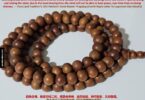Question: A new ‘lineage’ depicts the Pure Land Path as exclusively Other-Power. Is this true?
Answer: This so-called ‘lineage’ is NOT of the official time-tested lineage with 13 Chinese Pure Land Patriarchs. It is NOT pure or pristine, as explained in part at https://purelanders.com/2017/04/17/30-misconceptions-of-so-called-pristine-pure-land-buddhism It is best to avoid confusing yourself by looking at their materials.
Also, it is NOT true that the Pure Land path was classified as exclusively Other-Power by any Chinese Great Master of the Pure Land tradition. It was classified as Self-AND-Other-Power by Great Master Tanluan, as can be seen at https://purelanders.com/2017/06/22/biography-of-the-chinese-pure-land-tradition-great-master-tanluan
Other right classifications can also be seen in this chart at https://purelanders.com/2017/12/30/double-trouble-of-the-evil-period-dharma-ending-age
Question: Is it true that mixed Pure Land practices are not of the actual Pure Land Path?
Answer: If we study the Pure Land Masters’ teachings, including Great Master Shandao’s ACTUAL teachings, which absorbed Great Master Tanluan and Great Master Daochuo’s teachings, that are NOT quoted out of context, it can be seen that they NEVER taught that mixed practices are not the Pure Land Path, as long as the main component of sincere Nianfo (practice of mindfulness of Amituofo) is there. For example, see Great Master Shandao’s teachings at https://purelanders.com/2017/09/20/what-are-main-mixed-practices
And this is how Great Master Yinguang explains why mixed practices are still important for many: https://purelanders.com/2017/12/16/why-are-there-focused-complete-cultivation-methods To claim that mixed practices will not lead to Pure Land slanders the Buddha and the Pure Land Patriarchs. It also effectively lessens the number of practitioners who reach Pure Land, when they are misled to think their mixed practices makes them not pure enough. Also discouraged from reaching Pure Land are those who are keen to practise more than the minimum.
Of course, if some have no choice but to practise the bare minimum due to their karmic conditions, so be it. However, no Buddha or Patriarch hopes that all sentient beings practise only the absolute minimal to reach Pure Land, which is risky. The more practices there are, the higher the grade of birth is qualified for in Pure Land too, to more efficiently progress to Buddhahood for helping more beings. Aim too low and the target might be missed. Aim higher and the target is likelier to be hit confidently, with no possibility of overshooting.
Question: Is it true that the Pure Land path was a separate tradition under Great Master Shandao, which was vitiated (i.e. spoilt, impaired) by association with Self-Powered practices, before leaving China, and re-entering again from Japan?
Answer: No. The Pure Land Path has always been in China with the efforts of the 1st to 13th Patriarchs, as a Self-AND-Other-Powered path. ALL the Chinese Pure Land Patriarchs were instrumental in propagating the ACTUAL Pure Land Path – which is they they were carefully conferred the title of Patriarchship by the Buddhist communities of their eras.
If we study the First Patriarch Great Master Huiyuan’s efforts, it will be realised that they were crucial in kickstarting the popularisation of the Pure Land Path, as can be seen at https://purelanders.com/2017/04/17/biography-of-the-first-patriarch-of-chinese-pure-land-tradition-great-master-huiyuan So much so, that even the Second Patriarch Great Master Shandao made a pilgrimage to visit the monastery he founded, as can be seen at https://purelanders.com/2017/12/15/biography-of-the-second-patriarch-of-the-chinese-pure-land-tradition-great-master-shandao In this way, each Chinese Pure Land Patriarch built his efforts upon the previous.
As above, in this link: https://purelanders.com/2017/09/20/what-are-main-mixed-practices, it can be seen that Great Master Shandao NEVER devalued Self-Power practice, what more since the Pure Land path is essentially of Self-AND-Other-Power. Without some Self-Power, Other-Power can never be connected to. If only Other-Power is needed, with absolutely no Self-Power, what practice is there needed by one-Self? If no practice is needed at all, how can it be a valid path? Emphasis on relinquishing Self-Power totally is somewhat equivalent to wishing to realise non-self, which is an order too tall to meet for most to reach Pure Land.
Question: This new ‘lineage’ emphasises simplicity, assurance and safety, which are attractive qualities, especially for average, busy and iniquitous (i.e. evil, morally wrong) people in this Dharma-Ending Age. However, how can it be that simple when Great Master Yinguang clearly taught the ‘Three Great Essentials When Approaching Death’: https://purelanders.com/now?
Answer: What taught by this so-called ‘lineage’ over-simplifies and thus distorts the ACTUAL breath and depth of the Pure Land Path, as taught by the Buddha and Chinese Pure Land Patriarchs collectively. Exactly due to unreasonable over-simplification, this makes their ‘teachings’ NOT so assuring, and NOT so safe, (as explained above). The overly ‘assuring’ instead becomes not so assuring instead. It is lack of assurance that led you to ask the questions above. However, those who do not make the effort to learn the ACTUAL Pure Land Path will be attracted and might be misled accordingly.
Yes indeed, the ‘Three Great Essentials When Approaching Death’ are, well, ESSENTIAL. Though the Three Great Essentials encompass the Three Provisions in essence, they also cover additional factors to look out for, so as to nurture the Three Provisions adequately and in time.
As mentioned, it is best to avoid confusing yourself by looking at the materials of those now known to misportray the ACTUAL Pure Land Path. This article on the synergistic efforts of all the 13 Chinese Pure Land Patriarchs is also worth a read: https://purelanders.com/2017/04/11/is-great-master-shandao-the-only-pure-land-patriarch Also not to be missed is this growing collection that introduces key contributions of Patriarchs and other Great Masters of the Pure Land tradition: https://purelanders.com/category/biographies
Related Article:
30 Misconceptions Of So-Called ‘Pristine’ Pure Land Buddhism
https://purelanders.com/2017/04/17/30-misconceptions-of-so-called-pristine-pure-land-buddhism






Question: I came across a ‘teaching’ on how to recite Amitabha’s name. Are its ideas correct?
Answer: If it is what also came across, there are the following mistakes.
1. The term ‘Amitabha’s name’ is wrong. It should be ‘Amita(“bha” or “yus”) Buddha’s (Amituofo: 阿弥陀佛) name’, or simply ‘Amita’ (Amituo: 阿弥陀), as a supreme mantra. ‘Amita’ (阿弥陀) is the core name that can be extended to ‘Amitabha’ (无量光) or ‘Amitayus’ (无量寿). Retaining as ‘Amita’ encompasses both. Thus is his popular name in Chinese simply ‘Amita Buddha’ (阿弥陀佛). Reciting ‘Namo Amitabha Buddha’, although technically correct, is not very often done at the deathbed (if at all), as it is long and clunky. It is simpler to recite either ‘Namo Amituofo’ or ‘Amituofo’, with equal sincerity.
2. It is wrong to say the many skilful teaching methods on recitation are unnecessary. To say the methods are unnecessary is to slander the Pure Land Patriarchs and Great Masters who have been teaching them.
3. To recite the Buddha’s name is not just like calling someone’s name, as it should be with utmost sincerity (至诚心), a sense of homage (礼敬) and refuge for life (皈命).
4. To say to ask about recitation methods is to consider Amituofo too impersonal, unfamiliar and distant can be wrong, as it can simply be out of ignorance and wanting to know how to do it properly, to express sincerity. This is to make the practice personal, familiar and close.
5. There is nothing wrong if Amituofo feels like a stranger due to lack of understanding at first. What needed is to further learn and practise. He is indeed (supremely) exalted and otherworldly (in world-transcending ways). If not, there would be no point in taking refuge in him.
6. The Buddha cannot truly be displeased by anything we do or not do, but we should practise sincerely to truly connect to him. The Pure Land Tradition’s 13th Patriarch Great Master Yinguang (净土宗十三祖印光大师) repeatedly emphasized the importance of having sincerity during Dharma learning and practice to truly benefit.
7. The Pure Land Tradition’s 2nd Patriarch Great Master Shandao (净土宗二祖善导大师) taught much on the importance of utmost sincerity too, as one of the Three Minds (三心) for reaching Pure Land.
8. With normal people, do we always simply say their names directly? It is not always so, as if so, they might be called rudely, angrily and such. It is disrespectful to say the Buddha is like an unconscious person to be called, as he is fully awakened, and knows everything all the time.
9. Stating the Buddha’s name directly is alright – but it should be with sincerity. If with negative attitudes instead, it can be slanderous. Stating the Buddha’s name clearly still misses the point of reciting sincerely – as it is possible to be clear but still not sincere, or unclear but still sincere, (especially when when weak and dying, in the mind).
10. The grannies who pass away peacefully recited Amituofo sincerely – not like calling a close friend (casually), but their loving Mother. This is the attitude taught by Great Power Arrived Bodhisattva (大势至菩萨).
11. The key recitation method is utmost sincerity. Spiritual intimacy comes from sincerity.
12. There is potential great danger in nullifying what the Great Masters have taught, and to oversimplify ‘teachings’ – until they are hardly proper, if at all. This can lead to the already precious but difficult to believe (难信) Pure Land teachings becoming even harder to believe, thus with less practitioners, and thus with less who reach Pure Land, due to many lacking focus on sincerity during practice too.